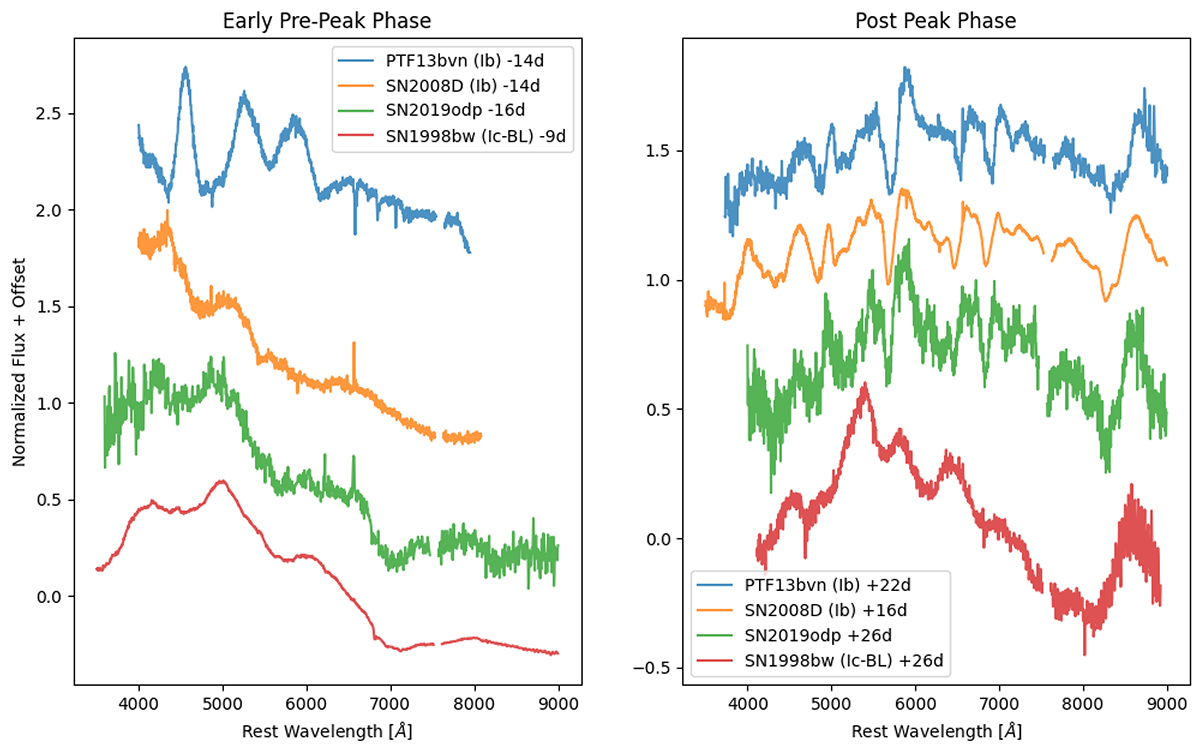Fig. 11.

Download original image
Comparison of spectra of SN 2019odp before peak (left panel) and after peak (right panel) against selected comparison objects. The phases with respect to the respective g/V-band peak epochs are denoted in the legend. Telluric absorptions have been marked and masked, and the spectra have been corrected for host extinction. At the early phase, the spectrum of SN 2019odp (the NTT classification spectrum) looks very much like the Type Ic-BL SN 1998bw (shown in red, Patat et al. 2001), and not at all like the typical Type Ib iPTF13bvn (shown in blue, Fremling et al. 2016). This is the reason for the initial classification on TNS as a Type Ic-BL supernova. However it looks quite similar to the Type Ib SN 2008D (shown in orange, Shivvers et al. 2019; Modjaz et al. 2014), which has earlier observations than iPTF13bvn. At later phases (right panel), SN 2019odp is instead similar to typical Type Ib supernovae such as iPTF13bvn, showing narrower lines and clear helium features, as opposed to SN 1998bw. In fact, the most similar object might be the Type Ib SN 2008D. Some of the spectra suffer from host contamination.
Current usage metrics show cumulative count of Article Views (full-text article views including HTML views, PDF and ePub downloads, according to the available data) and Abstracts Views on Vision4Press platform.
Data correspond to usage on the plateform after 2015. The current usage metrics is available 48-96 hours after online publication and is updated daily on week days.
Initial download of the metrics may take a while.


